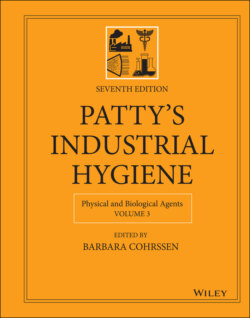Читать книгу Patty's Industrial Hygiene, Physical and Biological Agents - Группа авторов - Страница 143
6.5 Stage and Studio Lighting
ОглавлениеHigh‐powered lamps for stage or studio illumination can be a significant source of exposure to performers and production crew members. A study of 11 models of metal halide or halogen photoflood lights used in television studios and theaters found that, for several photofloods, the TLV for actinic UV, UV‐A, or blue‐light exposure could be exceeded in a few minutes. Exposures were higher in the television studios than in the theater stages (83).
Blue LEDs used in stage lighting can cause blue‐light hazard overexposure in minutes (84). Stage luminaires that used a combination of blue, green, and red LEDs to produce white light were found to be similar to other white stage lighting tested in terms of the ratio of the blue‐light hazard‐weighted radiance to the illuminance (perceived brightness) of the source. Due to the low photopic response to blue light (around 450 nm), blue LED arrays used as blue stage lighting did not appear very bright; therefore viewing time might not be limited by aversion (84). Exposure to UV‐A from “blacklights” used for fluorescent effects during performances could exceed dose limits for protection of the lens in about an hour of viewing, and exposure duration would not be limited by behavioral aversion to bright light (85).
Stage and studio lights should be equipped with UV filters, which are very effective at reducing actinic UV and UV‐A exposure (86). Protecting performers from blue light may pose a difficult challenge because these workers must often look toward the lights for extended periods and might not be able to wear protective eyeglasses for cosmetic reasons. The possibility of using contact lenses that absorb UV and blue light has been suggested (83).
